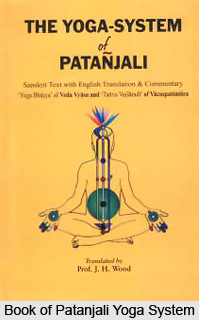 The tasya saptadha prantabhumih prajna yogic sutra deals with the seven states of awareness or consciousness. They have been variedly explained by several commentators. There are also seven disciplines that must be incorporated within the perceiver and the seer. All the cognitions of mind, sense and body must be unified as a whole, as one. And when this is achieved, an uninterrupted flow of judicious knowingness is gained. A sadhaka obtains luminosity by conquering every malicious worldly dimension.
The tasya saptadha prantabhumih prajna yogic sutra deals with the seven states of awareness or consciousness. They have been variedly explained by several commentators. There are also seven disciplines that must be incorporated within the perceiver and the seer. All the cognitions of mind, sense and body must be unified as a whole, as one. And when this is achieved, an uninterrupted flow of judicious knowingness is gained. A sadhaka obtains luminosity by conquering every malicious worldly dimension.
tasya its
saptadha sevenfold, of seven stages
prantabhumih territory, province, resting place
prajna perfect knowledge, supreme knowledge, awareness,
consciousness
Through this unbroken flow of discriminative awareness, one gains perfect knowledge which is composed of seven spheres.
There are seven frontiers to be integrated between the seen (prakrti) and the seer (purusa). They comprise - integration of the body (safira samyama), the senses (indriya samyama), energy (prana samyama), mind (mano samyama), intellect (buddhi samyama), consciousness (citta samyama) and soul (atma samyama), each realising its own individual identity. Expertise in yoga will bring this sevenfold knowledge.
According to Patanjali, the seven states of conscious awareness are - emerging consciousness {vyutthana citta), restraining consciousness (nirodha dtta), sprouted or individualised consciousness (nirmana cilta), tranquil consciousness (prasanta citta), attentive consciousness (ekagrata citta), fissured or rent consciousness (chidra citta) and ripe or pure consciousness (paripakva or divya citta).



